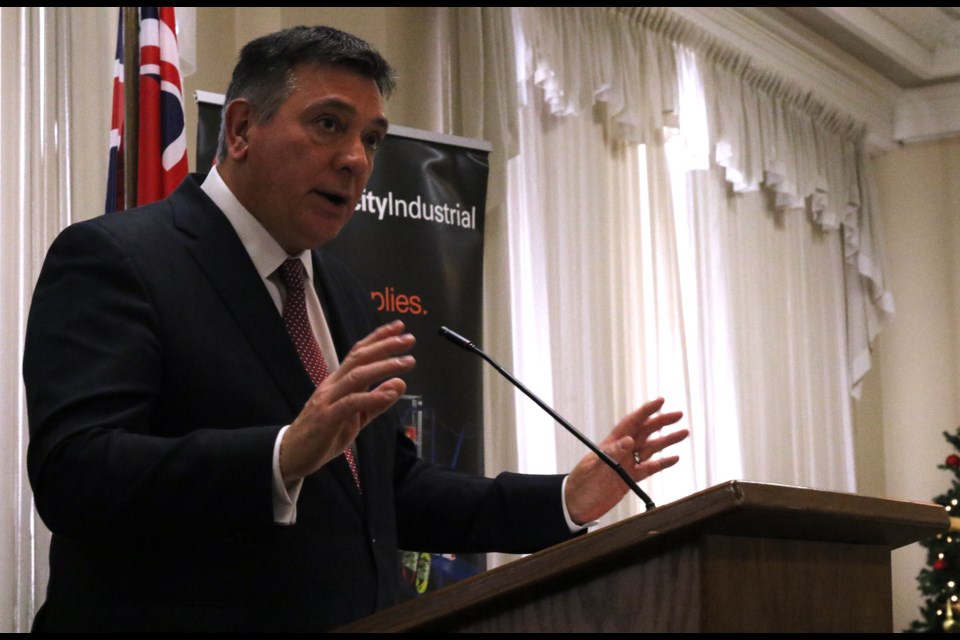THUNDER BAY -- Municipal and business leaders are both challenging Ontario Finance Minister Charles Sousa to ensure the north receives benefits from the province's pending cap and trade plan.
Sousa launched a pre-budget consultation tour on Friday at the Prince Arthur Hotel with a Thunder Bay Chamber of Commerce luncheon that was dominated with questions over the province's plan to price and trade carbon, which will launch in only a few weeks.
The program that will raise $1.9 billion annually by commodifying pollution aims to reduce carbon emissions to a rate 80 per cent below 1990 levels by 2020. By law, that money will be dedicated to further emissions reductions, energy innovation and programs that will be created to rebate businesses and residents.
Although Ontario prepares to enter a market including companies in Quebec and California in the spring of 2017, however, the program's critics argue it's still not clear how the money that's collected will be re-committed.
"The cap-and-trade revenues are going into a lot of programs," said chamber president Charla Robinson.
"We need to make sure those programs, that the dollars reach communities like Thunder Bay so we're able to reap the benefits of these programs."
Thunder Bay city administration estimates the cap and trade policy will add $350,000 to the municipality's energy costs in 2017.
Northwestern Ontario Municipal Association vice presdient and Shuniah Mayor Wendy Landry pointed out alternative transportation to oil-powered vehicles and alternative energy is frequently unavailable in the north, where many people have to travel to receive goods and services in larger centres. The same is true, she argued, for the cost of development.
"People have to realize up here in Northwestern Ontario it costs more to do things with regard to construction and infrastructure investments," Landry said.
"The cap and trade tax is an added tax on every area of our lives. We don't have a choice. We have to drive in this area. We don't have transit and go buses and those kinds of things that take us between our municipalities."
Sousa argued the province has already "de-carbonized" its energy system by phasing out coal and being competitive in the economy of the future will demand a commitment to low-carbon energy development.
He said from remote First Nations using diesel to northern residents heating their homes with wood, the north will benefit from energy modernization from the investments the cap and trade program will allow.
"There are too many that are relying on traditional, antiquated systems that are expensive, that are hard to deliver and that’s bad for their health," he said.
"What we’re proposing is something more innovative, something that allows them to benefit from more directly and we have to foster ways to deliver this services a t a much reduced cost. Cap and trade proceeds are by law being re-directed for that purpose and that is a benefit to those communities that are the most isolated.
